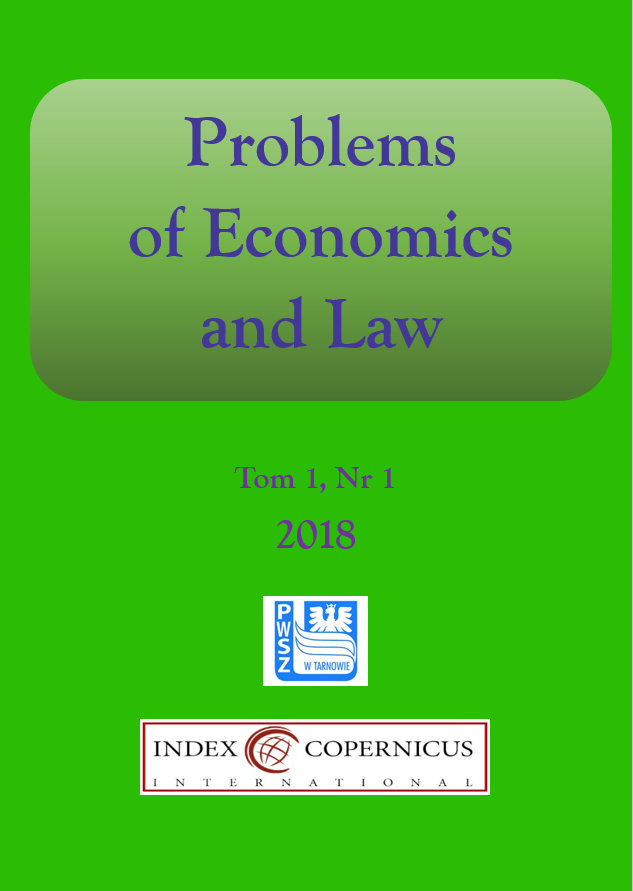Model finansowania systemu edukacji
DOI:
https://doi.org/10.5604/01.3001.0012.8259Słowa kluczowe:
edukacyjna funkcja produkcji, edukacyjna wartość dodana, model finansowaniaAbstrakt
Cel: Próba wskazania modelu finansowania edukacji uwzględniającego miary efektywności systemu edukacyjnego.
Materiał i metody: W artykule wykazano, że możliwe jest zmierzenie efektów systemu edukacyjnego pozwalających na pominiecie środowiska społeczno-ekonomicznego ucznia. Zastosowanie edukacyjnej wartości dodanej, która jest miarą wspomnianych efektów systemu edukacyjnego powinno być wsparte uwzględnieniem poziomu rozwoju społeczno-ekonomicznego jednostek samorządowych.
Wyniki: Z badań przeprowadzonych w Polsce wynika, że zmienne społeczno-ekonomiczne na obszarach jednostek samorządowych silnie modyfikują wartość edukacyjnej wartości dodanej. Zjawisko to było powodem zaproponowania korekty w systemie finansowania edukacji.
Wnioski: Zaproponowany model finansowania edukacji uwzględnia czynniki jakościowe procesów edukacyjnych. Wdrożenie takiego modelu powinno w efekcie długofalowym przyczynić się do poprawy jakości kapitału ludzkiego społeczeństwa.
Statystyka pobrań
Bibliografia
ARIAS, R. M. 2009. Uses, applications and problems of educational value-added models.Revista De Educacion, 217-250. Google Scholar
ARIAS, R. M., SOTO, J. L. G., MORERA, M. C. 2009. Concept and evolution of educational value-added models. Revista De Educacion, 15-45. Google Scholar
BIELECKI, P. 2005. Bony edukacyjne. Granice urynkowienia edukacji, Warszawa, Szkoła Główna Handlowa w Warszawie. Google Scholar
BOWLES, S. 1969. Educational Production Function, Washington, Office of Education (DHEW). Google Scholar
CORNELL, G. R. 1985. The value-added approach to the measurement of educational quality. Journal of professional nursing : official journal of the American Association of Colleges of Nursing, 1, 356-63. Google Scholar
CZYŻEWSKI, B., BRELIK, A. 2016. Modelowanie społeczno-ekonomicznych determinant jakości edukacji. Zeszyty Naukowe WSES w Ostrołęce, 20, 93-104. Google Scholar
CZYŻEWSKI, B., POLCYN, J. 2016. Education Quality and its Drivers in Rural Areas of Poland (in print). Eastern European Countryside, 22. Google Scholar
DEUTSCH, J., DUMAS, A., SILBER, J. 2013. Estimating an educational production function for five countries of Latin America on the basis of the PISA data. Economics of Education Review, 36, 245-262. Google Scholar
ESCOBAR, L. D., IZQUIERDO, M. G. 2008. Incidence Analysis of Higher Education Financing System in Spain Using a Behavioural Model. Hacienda Publica Espanola, 117-152. Google Scholar
FERRAO, M. E., COUTO, A. P. 2014. The use of a school value-added model for educational improvement: a case study from the Portuguese primary education system. School Effectiveness and School Improvement, 25, 174-190. Google Scholar
GARY-BOBO, R. 2006. Education, economic efficiency, and distributive justice: a Rawlsian approach. Revue D Economie Politique, 116, 199-228. Google Scholar
HUSHMAN, G., HUSHMAN, C. 2015. Value-Added Modeling in Physical Education. Strategies: A Journal for Physical and Sport Educators, 28, 23-27. Google Scholar
KOEDEL, C., BETTS, J. R. 2007. Re-Examining the Role of Teacher Quality in the Educational Production Function (Working Paper 708). Columbia: University of Missouri -Department of Economics. Google Scholar
KUNDU, A. 2016. The Effectiveness of Public Spending on Education and Health Care in Brazilian Economy. Nile Journal of Business and Economics, 2, 55-68. Google Scholar
LOSKUTOVA, M. V. 2016. The analysis of social and economic efficiency of models and instruments of transformation of the education system. Социально-Экономические Явления и Процессы, 11, 63-69. Google Scholar
MANGOLD, M., OELKERS, J., RHYN, H. 2000. Financing education through educational vouchers - Models and experiences. Zeitschrift Fur Padagogik, 46, 39-59. Google Scholar
MEYER, P. A., NASCIMENTO, M. 2008. School Resources and Student Achievement: Worldwide Findings and Metodological Issues. Educate Journal, 3, 19-30. Google Scholar
RAPPLE, B. 1992. A Victorian experiment in economic efficiency in education. Economics of Education Review, 11, 301-316. Google Scholar
SHOEMAKER, J. S. 1983. Emerging Role of Educational Foundations in Financing Education. Annual Meeting of the California Educational Research Association (Los Angeles, CA, November 17-18, 1983). Google Scholar
THIEME, C., PRIOR, D., TORTOSA-AUSINA, E., GEMPP, R. 2016. Value added, educational accountability approaches and their effects on schools' rankings: Evidence from Chile. European Journal of Operational Research, 253, 456-471. Google Scholar
TOBÓN, D., VALENCIA, G., RÍOS, P., BEDOYA, J. F. 2008. Organización jerárquica y logro escolar en Medellín: un análisis a partir de la función de producción educativa. Lecturas de Economía, 145-173. Google Scholar
TODEA, N., TILEA, D. M., ELSEVIER SCIENCE, B. V. 2011. Comparative analysis between the models for financing of education in Romania and the United Kingdom. 3rd World Conference on Educational Sciences (2011), 15, 5. Google Scholar
http://appsso.eurostat.ec.europa.eu, dostęp: 22.06.2016 r. Google Scholar
Pobrania
Opublikowane
Jak cytować
Numer
Dział
Licencja
Prawa autorskie (c) 2018 Państwowa Wyższa Szkoła Zawodowa w Tarnowie & Autor

Utwór dostępny jest na licencji Creative Commons Uznanie autorstwa – Na tych samych warunkach 4.0 Miedzynarodowe.





